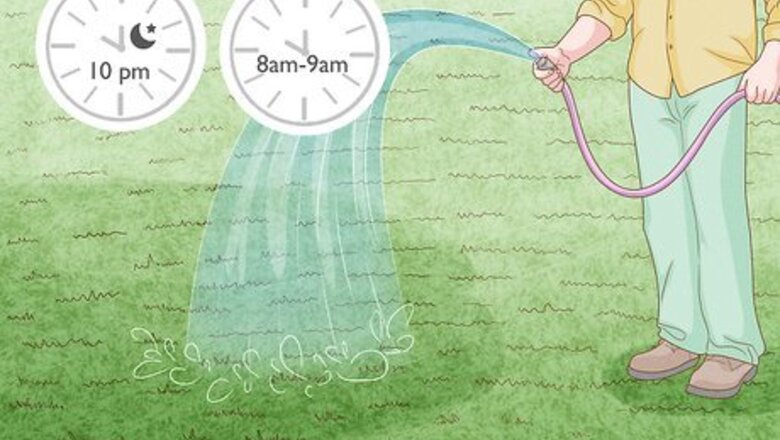
views
Watering
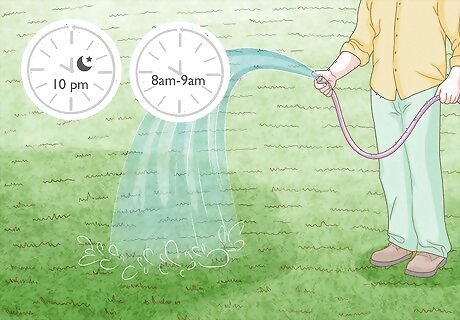
Water in late evening or early morning. Cool, humid, low-wind conditions distribute water evenly and reduce loss to evaporation. Ideal conditions usually occur between 10pm and midnight, or between 8am and 9am. Some local water departments forbid night watering to prevent waste from sprinklers left on all night.
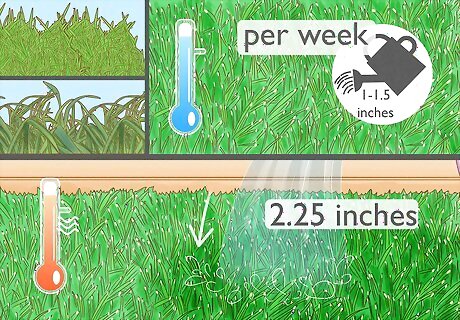
Check your lawn's water needs. Your watering schedule should be based on grass species, lawn health, heat, and soil conditions. Cool season grasses (bluegrass, ryegrass, fescues) generally need 1–1.5 inches (2.5–3.8cm) per week, rising to 2.25 inches (5.7 cm) in hot, dry weather. Drought-resistant warm season grasses (buffalo grass, blue grama) can last for weeks without watering, even in the summer. Once you have a good guess for how much water your lawn needs each week, read the next step to find out how to divide it among watering sessions. A local university extension website can teach you how much watering your grass species needs in local weather conditions. To track the amount of water you're using, leave cans or other open containers on your lawn. Shaded grass usually needs less water, but this may not be true if it's competing with tree and shrub roots.
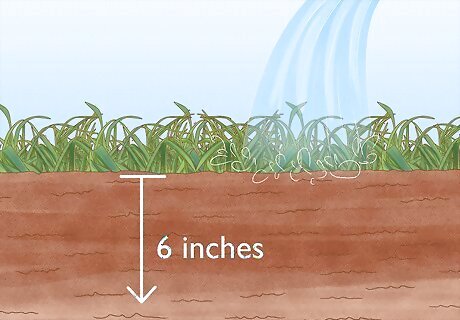
Water deeply and infrequently. This approach encourages root growth, which increases resistance to drought and disease. Each watering session should moisten the soil down to the depth of the lowest existing roots, which tend to be at least six inches (15cm) for a healthy lawn. The drainage rate varies greatly based on soil. Check the depth of moisture 30–60 minutes after watering, or follow this rough guide: Sandy soil drains fast, and may only need 0.5 in. (1.25cm) of water to reach a 6 inch (15cm) depth. The lawn has less time to absorb this water, so water more frequently to make up for it. Loamy soil takes roughly 0.75 inch (1.9cm) of water to reach a 6 inch (15cm) depth. Dense clay soil drains slowly, and may need 1–1.5 inches (2.5–3.8cm) water to reach 6 inch (15cm) depth.
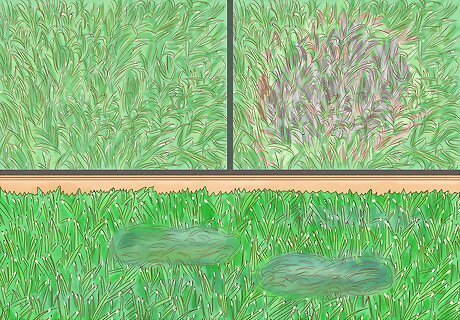
Look for signs of drying. Don't wait until your lawn is brown before you give it more water. Check for wilting, a change in color (becoming more grey, purple, or blue), and for footprints that stay visible for an hour or more. Letting your lawn reach this state actually increases long term health, but water shortly afterward, before the grass turns brown. You can also dig into the soil to see how dry it is. Never water before the top two inches (5cm) of soil have dried out. If the lawn dries in a few spots, just water those areas extra.

Let cool season grass stay dormant. Cool seasons grasses typically go dormant in hot weather, turning brown but ready to revive when cool weather returns. It is possible to prevent this with heavy watering, but once it goes dormant, do not try to revive it until hot weather passes. The grass spends a lot of energy on revival, leaving it vulnerable and weak if it revives and goes dormant more than once a year. While the grass is dormant in hot water, give it 0.25–0.5 inches (6–12mm) water per week.
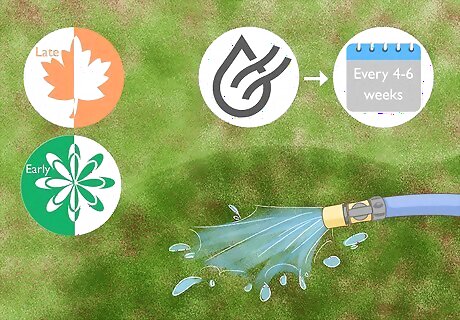
Water rarely outside the growing season. Your grass does not need nearly as much water while it is not actively growing, typically late fall to early spring. If weather is dry, you may still need to water once every 4–6 weeks. Do not water while the ground is frozen. Areas of shallow soil and exposed slopes are more likely to dry. Check south and west facing slopes especially (north and east facing in the southern hemisphere).
Mowing
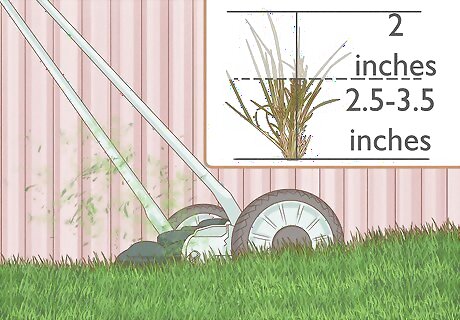
Cut grass high. Tall grass makes for a much healthier lawn. Never cut your lawn below two inches (5cm), and keep it at 2.5–3.5 inches (6.4–8.9cm) if you can stand it. Older lawn care guides may recommend different heights for different seasons. Most modern experts agree that grass should be left tall year-round.
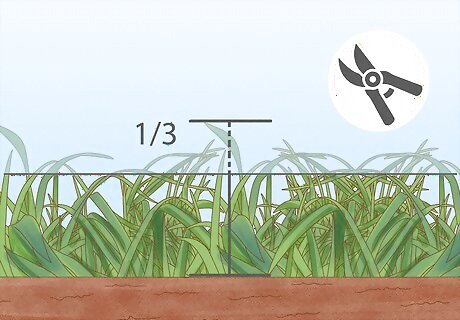
Remove no more than ⅓ of the grass blade. Cutting away more than ⅓ of the grass height seriously damages your grass. If you miss a mowing session and the grass is far too tall, remove ⅓ of the grass, then wait a few days before cutting it down to the desired height. You may need to cut fast-growing species every three or four days during ideal spring conditions. For example, if the goal height is 2 inches (5cm), don't let the grass grow taller than 3 in. (7.5cm) before mowing. If the goal is 3 inches (7.6cm), don't let it get above 4.5 in (11.4cm).
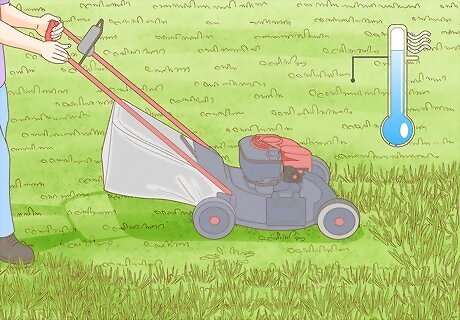
Mow when the lawn is cool and dry. Avoid mowing during the hottest part of the day, when grass is vulnerable. Also avoid mowing while the grass is wet. Wet clippings clump on the lawn instead of getting evenly distributed, some mowers are less efficient, and the slippery grass can be dangerous for the mower operator.

Leave grass clippings on the lawn. Grass clippings decompose quickly and provide nutrients for the lawn. You may use them elsewhere in your garden instead, but grass treated with herbicides and pesticides should not be used on flowers or vegetables. Grass clippings do not contribute to thatch, as is commonly believed.
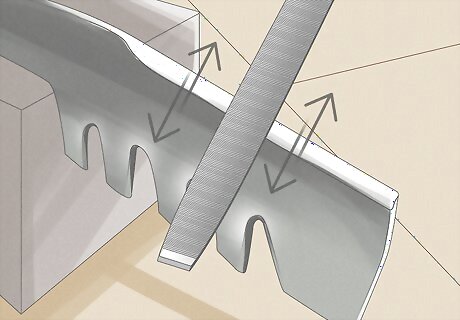
Sharpen mower blades regularly. Dull mower blades shred the grass blades, leaving them ragged and vulnerable to further damage. An annual sharpening is usually fine for a home lawn, but sharpening several times a season is best if the mower is heavily used.
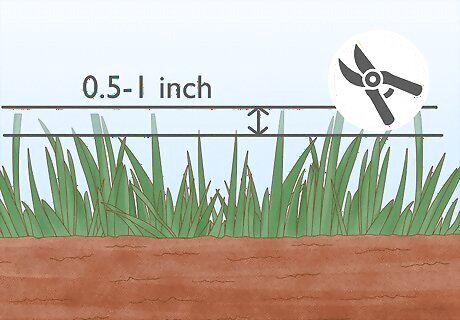
Cut the grass short at the end of the growing season. Once your lawn stops growing, remove an extra 0.5–1 inch (1.25–2.5 cm) on the final mow. This helps prevent matted grass and snow mold over the winter.
Fertilizing
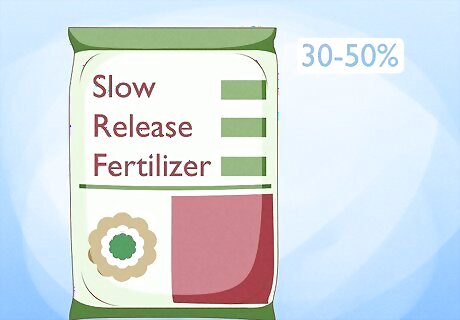
Choose a mixed slow release / fast release fertilizer. Choose a product with about 30–50% slow release fertilizer. If you can't find a mix, go with a slow-release fertilizer for your home lawn. This has a less dramatic effect, but has less risk of burning your lawn or causing excessive growth. Slow release fertilizers are also called timed release or insoluble fertilizers. They include urea foam, IBDU, and WIN. Fast release fertilizers include urea, ammonium nitrate, and ammonium sulfate.
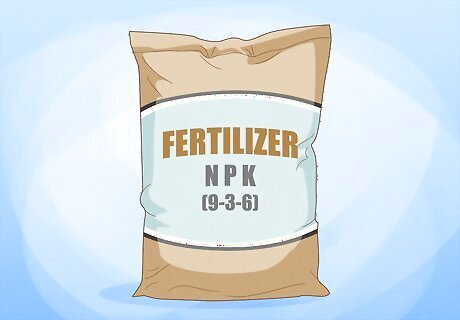
Find a nitrogen-heavy fertilizer. Nitrogen is the most important nutrient you can add to your lawn. The first of the three numbers on the fertilizer tell you the percentage of nitrogen it contains. This should be the highest number, with the ideal ratio around 3:1:2 or 4:1:2. For example, a 9-3-6 fertilizer has a ratio of 3:1:2. The 3 numbers on a bag of fertilizer are known as an NPK ratio—this stands for nitrogen, phosphorus, and potassium, in that order.
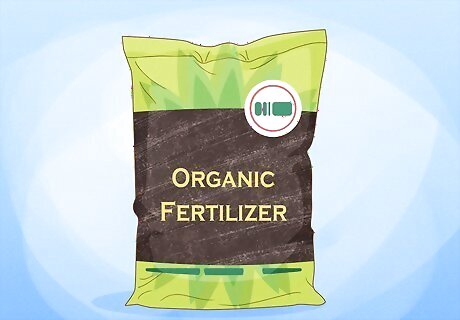
Choose an organic fertilizer if possible. Fertilizer made from animal or plant products decompose into proteins and carbohydrates that feed earthworms and microbes on your lawn. Keeping these populations healthy ensures well-aerated soil and fast decomposition of grass clippings. Organic fertilizers are also less likely to damage your lawn than synthetic products.
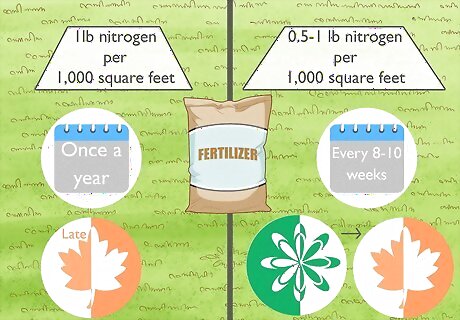
Decide on a fertilizer plan. All lawns need at least one fertilization a year to prevent water runoff and improve health. Past that, it's up to your how much effort you want to put in. Here are three approaches, from the easiest to the most effective: Fertilize once a year, applying 1 lb nitrogen per 1,000 square feet (0.5 kg / 100 m). Late fall is ideal, but never during frost, snowy or soaked ground, or a heat wave following a frost. Fertilize every 8–10 weeks from spring to fall, using 0.5–1 lb nitrogen per 1,000 square feet (0.25–0.5 kg / 100 m) each time. Skip one of these if you leave grass clippings on your lawn after each mow. Look at a local university agriculture extension website for a guide that matches your grass species and climate.
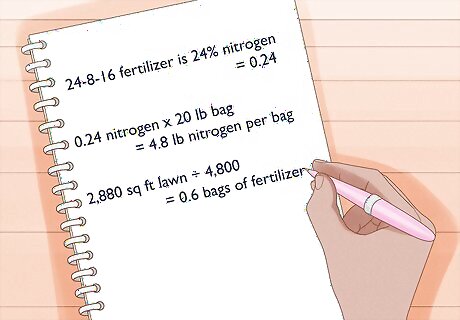
Measure how much fertilizer to use. The easy approach is to adjust your fertilizer spreader, which should come with instructions. Use the setting listed for 1lb nitrogen per 1,000 square feet (0.5 kg / 100 m). For a more accurate measure, use this calculation instead: Find the nitrogen percentage on your fertilizer packaging and convert to decimals. (For example, a 24-8-16 fertilizer is 24% nitrogen → 0.24.) Multiply this by the number of pounds of fertilizer per bag to get the pounds of nitrogen per bag. (0.24 nitrogen x 20 lb bag = 4.8 lb nitrogen per bag) Divide your lawn size by (1,000 x your answer). (2,880 sq ft lawn ÷ 4,800 = 0.6 bags will fertilize your lawn). Pour that amount of fertilizer in your spreader and set it to a light setting. Walk around your lawn evenly until it runs out.
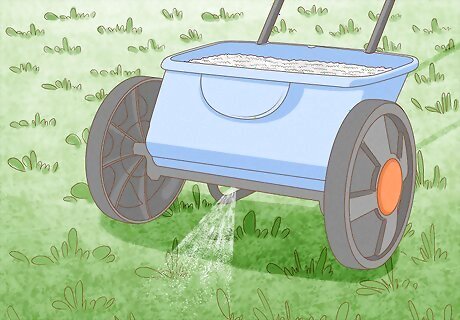
Operate the fertilizer spreader. The main goals are applying fertilizer evenly to avoid uneven color, and preventing spread outside the lawn. Accidentally fertilizing flowerbeds and vegetable beds may damage the plants, and letting fertilizer run off to storm drains and water sources causes environmental damage. Here's are guides for the two main types of spreader: Drop spreaders are more precise, spreading less fertilizer outside the lawn. Minimize "striping" by setting to half strength and crossing the lawn in two paths, at 90º angles. Broadcast (rotary) spreaders are more efficient for large lawns, but must be kept at least 10 ft (3m) from water sources and lawn edges. To apply evenly, space applications so 30% of the spreader range overlaps.
Additional Upkeep and Troubleshooting
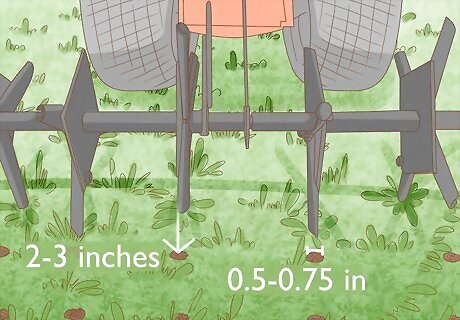
Aerate your yard once or twice a year. A lawn aerator, available from tool rental companies, removes plugs of soil from your lawn to improve aeration and drainage. For a home lawn, one aeration each fall is usually enough. Aerate when the ground is soft enough to penetrate, but a little on the dry side to prevent compaction. Ideally, the machine should remove plugs about 2–3 inches (5–7.5cm) long, 0.5–0.75 in (1.25–1.9cm) in diameter. Pass over the lawn once or twice, or until there are eight or nine plugs per square foot (88-99 per m). Leave the plugs on the lawn to decompose. If they're taking too long, break them up by dragging metal objects over the grass, or collect them to compost.
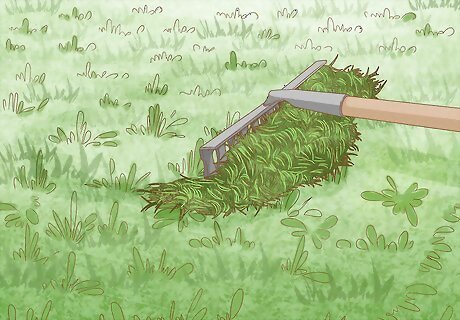
Remove excessive thatch. Thatch is the spongy mat of roots and stems that build up on the lawn surface. Once it reaches 0.5 in (1.25 cm) thick, it will grow rapidly and prevent drainage and aeration. There are several ways to remove existing thatch: The best way to remove thatch is additional core aeration, described above. Rent a dethatching machine to remove thatch less than 0.5 in (1.25 cm) thick. Do this only in early fall or late spring, when weather is cool and there are several weeks of growth left. Run a power rake over the lawn, frequently and shallowly. Deep power raking can cause damage.
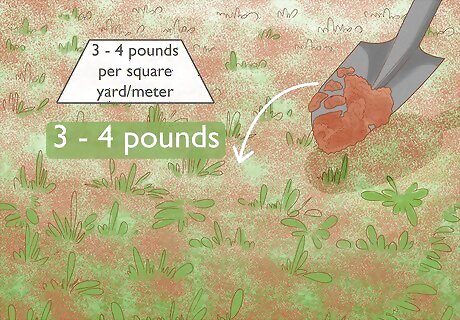
Prevent future thatch buildup. If thatch grows rapidly, try these fixes right after removing the existing thatch: Topdress the lawn with a ⅛ in (3mm) sprinkle of soil, using the same soil as the lawn. Conduct a soil test and adjust pH until it is between 6.0 and 7.0, or as recommended for your grass species. Add calcium carbonate lime to raise lawn pH, or sulfur to lower it. Reduce use of pesticides, which may be killing earthworms that break down thatch.
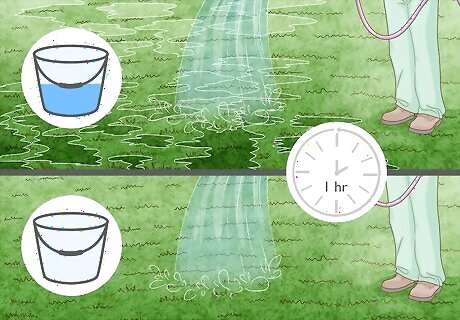
Prevent surface runoff. If water floods your lawn or runs off into surrounding areas, give the lawn half as much water as you currently use per session. Let the water drain for one hour, then give the lawn the rest of the water. This is usually a problem for dense clay soil and slopes. Commercial wetting agents added to the water will reduce runoff, but won't fix a serious problem. If your lawn is seriously compacted or has a thick layer of thatch, aerate the yard as described above.
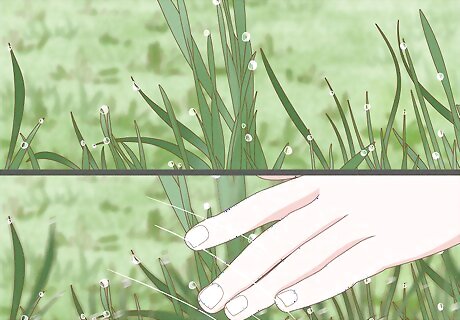
Shake water droplets from grass surface. Dew will not harm your grass, but "guttation" will. This is the formation of sugary water droplets along the blade edge, which attract disease and pests. To get rid of these, drag a hose or whipping pole over the surface, or hose them off with a brief spray.
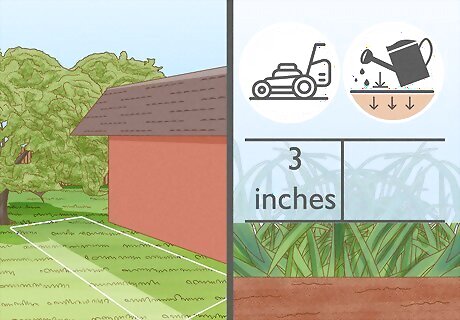
Improve poor grass in shady areas. If your grass does poorly in shade make these adjustments to shaded areas: Water less frequently but very deeply. Fertilize ⅓ or ½ as much as the sunny areas. Mow to 3 inches (7.5 cm) or higher. Reduce foot traffic.

Care for lawns in winter. Minimize lawn use during frosts, when the lawn is vulnerable. If you need to break up ice, use as little salt as possible. Calcium chloride products are safer than sodium chloride or salt-laden snow. Never use fertilizers to break up ice, as they will run off along with snowmelt and pollute water sources. Stick to light use in early spring until the grass dries out and revives. If there are bare spots, seed them early before weeds take hold.













Comments
0 comment